Inspired by the flight routes of city honeybees and looking at where they are going and what they are bringing back, I am setting up the Connected OpenGreens project. I see Connected OpenGreens in urban environments as a new medium of social sculpture, a Gesamtkunstwerk that relies on the creative participation of many. Connected OpenGreens are ephemeral living structures in the form of green spaces connected through animal life, such as bee colonies. They are set up and maintained by urban communities to regenerate areas of the city, particularly areas which are subject to social and urban stress. Connected OpenGreens are seen as art works that contribute to social cohesion and sustainability by raising awareness and minimizing resource waste. Artists create the safe spaces that enable the disruptive activities required to make corridors and they make the internal structure and activities of the Connected OpenGreens visible through visual and auditory representations.
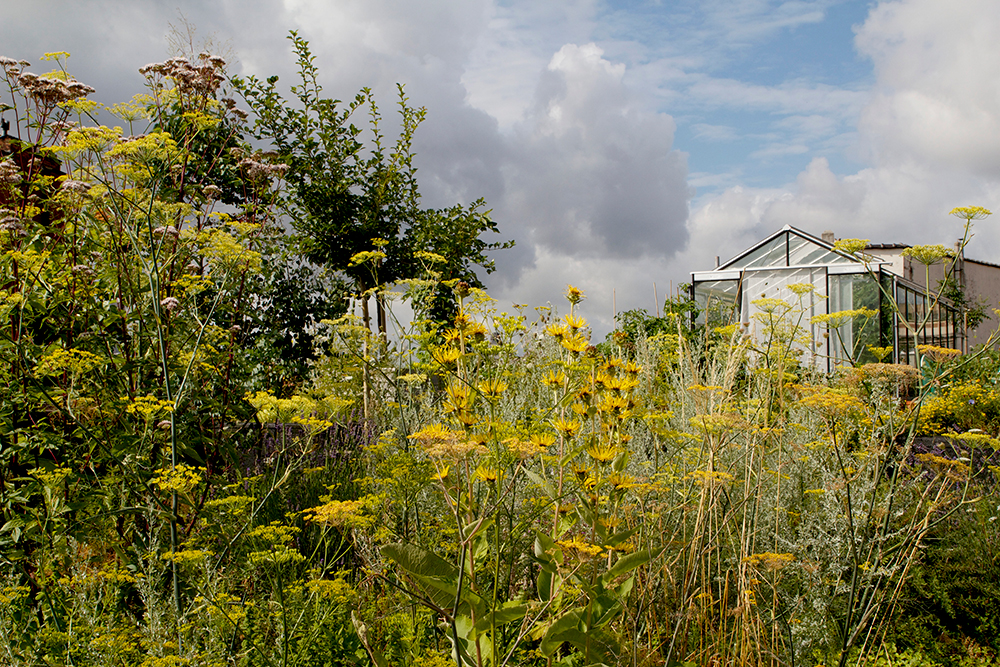
Urban ArtFarm on Brussels’ rooftops
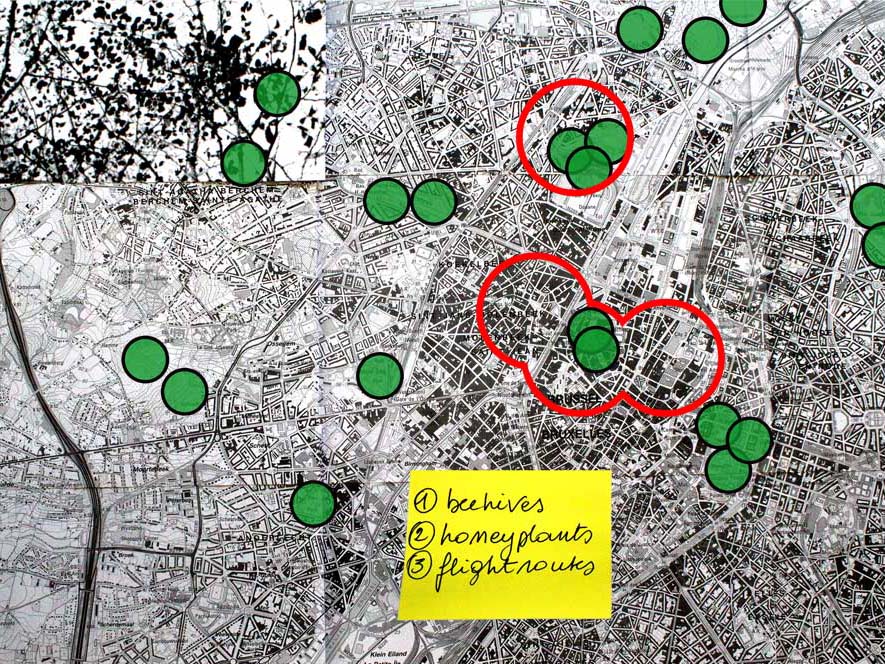

OpenGreens, connected by flightroutes / developing the Connected OpenGreens Database


Mapping gardens, actions, projects and electronics in the Connected OpenGreens database (2010)
Adding new sensor networks to a series of connected (rooftop) gardens and gathering the data in our oopensource audiovisual database Pandora as well as on opensourcedata.net, we want to portray the surround Canal Zone in Brussels as it is changing over time into a continuous productive urban landscape. It is a diverse area where a lot of activities (from accidental nature to collective and community gardening and urban agriculture) develop between the industrial buildings, office zones and living areas. With this project Connected OpenGreens, in which city honeybees play the leading role, we want to research how the sustainability of cities can be increased in the future and how citizens can be actively involved.
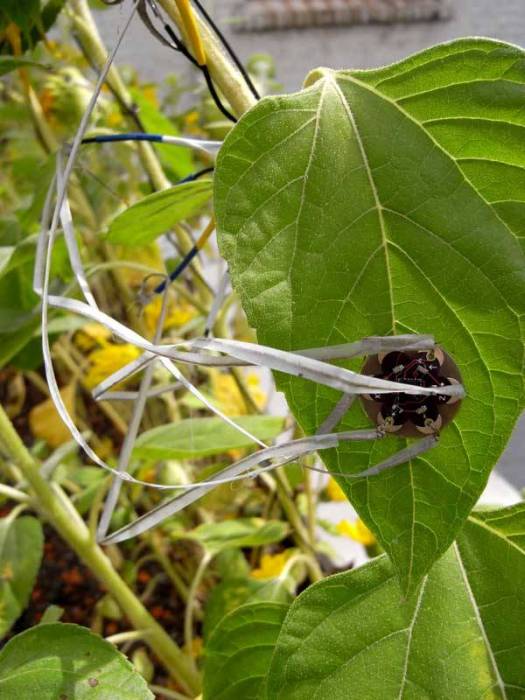

Measuring sap streams with Lilypad-technology ; data-sonifications in the gardens
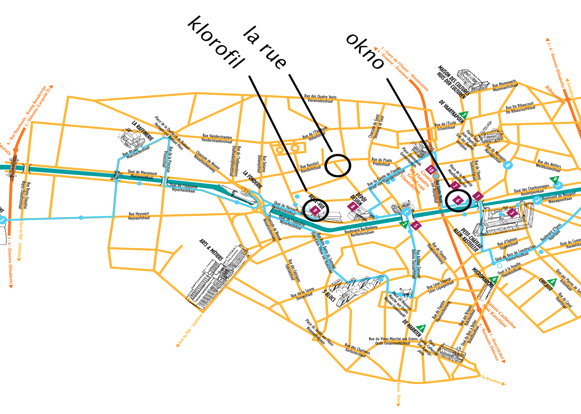
Connected OpenGreens at the Brussels Canal Zone
Ecological corridors rely partly on methods of urban agriculture, guerrilla gardening, ecological management and social anthropology. Connected OpenGreens also make good use of avant-garde technologies, so that such projects become experiments on the edges of art, science and technology: Embedded systems, novel sensors, low energy computing and sensor networks are useful for monitoring soil quality, plant growth processes, animal activity, pollution and the movement and interaction of people within the local environment. Mobile communication and geoinformatics are useful for aggregating sensory data and projecting them in real time onto maps. Complex systems analysis, cloud computing, and machine learning are useful for detecting patterns to allow prediction and the shaping of ongoing social and biological processes. And novel user interfaces are needed to make embedded technologies accessible and usable without requiring sophisticated background or training.


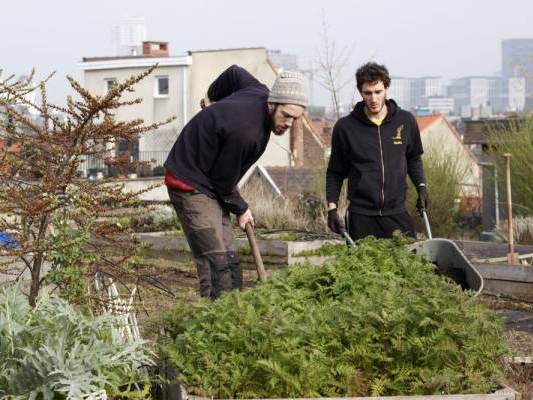
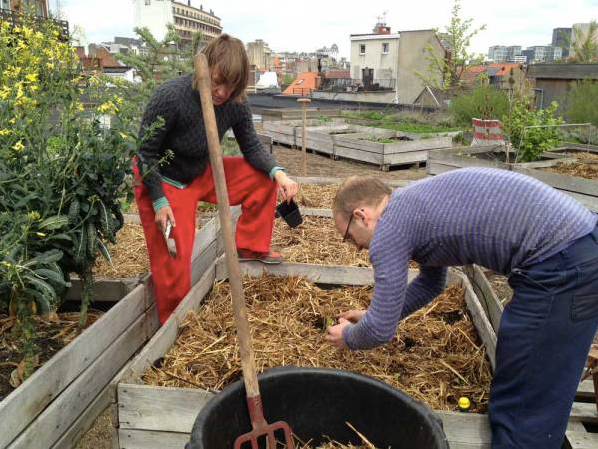
Urban Art Farm on top of the parking lot, Brussels center (2012-2013)



Harvest on a beautiful summer day, 2013 – Urban Art Farm Brussels
With the mapping of the connected biotopes around the Brussels canal into an ecological corridor, a Connected OpenGreens, we hope to come to a new but sensitive representation of our own living environment, not only providing insight in the constantly changing conditions we live in, but also bringing forth a new material from which new ecologial artworks can be created, be it installation, performance, media art or literature.
Together, the research becomes a fragmented but growing territory where everyone can connect and contribute to, and where slowly relationships and patterns emerge from. We want to work with creative ways to raise awareness, not only about our shared surroundings, but also about the ways we can spread a change that makes sense with a wider than anthropomorphic view only. In a world we share. Guided by social insects, the bees, following them on their flights across the land and cityscapes we live in.
We see this as a multifaceted work made over time by artists, technicians, and scientists together, but also involving an audience, by now skillfull with ICT and interested in ecological and urban issues.
This movie (2010, color, 16’50”, no sound) is documenting the ongoing Brussels OpenGreens project. The project was initiated in 2008 by AnneMarie Maes (so-on) in collaboration with the OKNO media lab. It is a research on the ecology of urban habitats, guided by the observation of city honeybees.
Links to presentations and derivative artworks of the Connected OpenGreens project:
Installations & presentations of the COG-project in exhibitions:
Kaaitheater Brussel – We, the Gardeners: Burning Ice Festival (2012)
Transmediale, Berlin – Open, O Sesami. Open, O Green. Open, O Fields (2013)
Taranaki, Aotearoa, New Zealand – SCANZ: 3rd Nature (2013)
Rixc, Riga, Latvia – FIELDS, patterns of social, scientific, and technological transformations (2014)
Budafabriek Kortrijk – The Green Licht District: the Invisible Garden (2014)
OpenGreens Database projects:
Connected OpenGreens Database: Connected OpenGreens is a project that is mapping marginal zones where culture and nature overlap and enter into a symbiotic relationship. The project researches different bottom up approaches for designing green human-centered environments that have the stability and diversity of natural ecosystems.
Pandora Open Source video database: pan.do/ra is a free, open source media archive platform. It allows to manage large, decentralized collections of video, to collaboratively create metadata and time-based annotations, and to serve your archive as a desktop-class web application. At OKNO, we used Pandora to document our collaborative OpenGreens-actions.
Laminaria.: Laminaria is a website documenting and comparing marine ecosystems in Europe. Laminaria operates on the border between sapiens and fauna. It outlines possible futures in a new bio/techno/natural world, a universe that is at once terrestrial and aquatic, a prerequisite for future coexistence.
Books, articles and papers:
Research.AnneMarieMaes.net – Urban Art Farms, Ecological Corridors and Connected OpenGreens: research wiki (2010-2012)
Connected OpenGreens book: Connected OpenGreens is a publication covering the community actions from 2009 to 2010 in the Ecological Corridors ‘Connected OpenGreens’.
Press on Connected OpenGreens.
